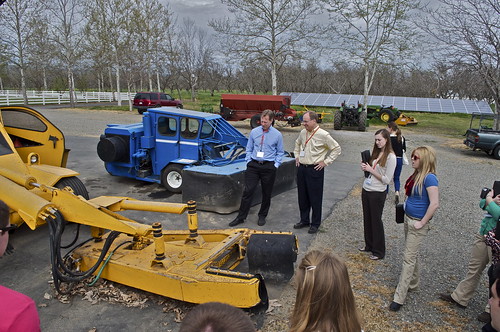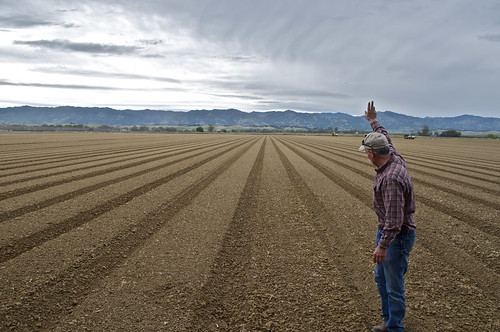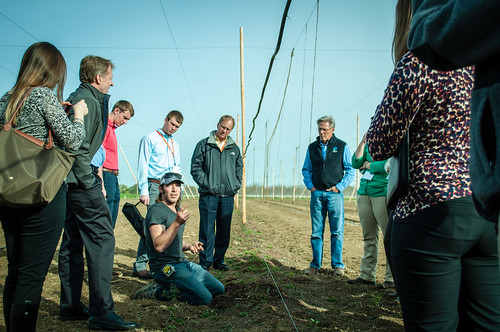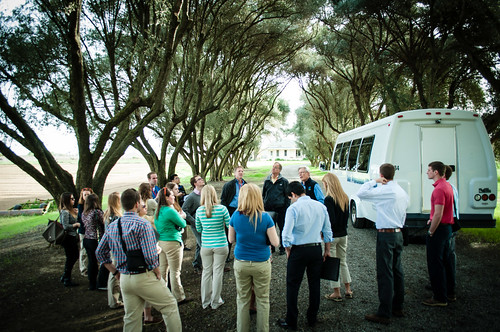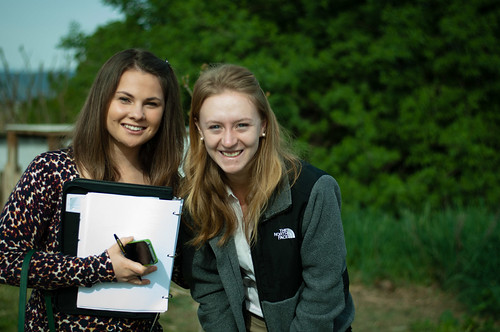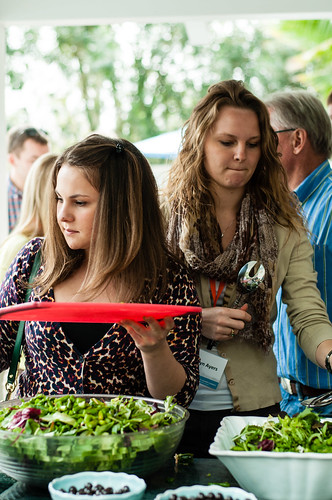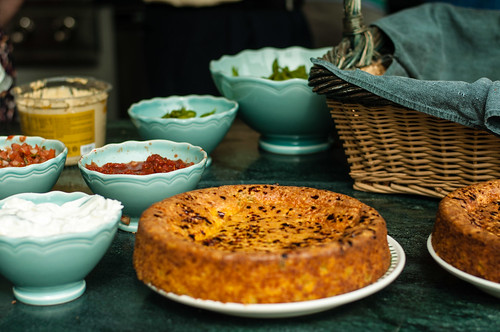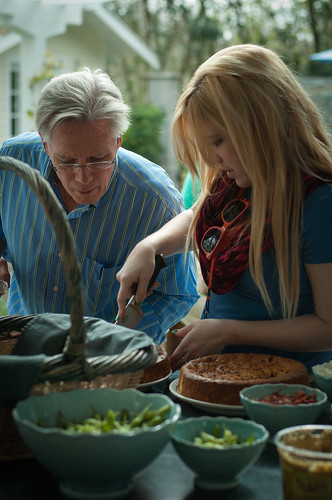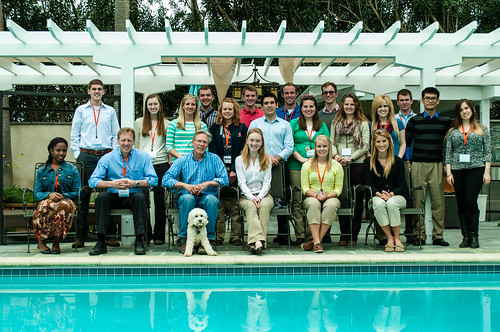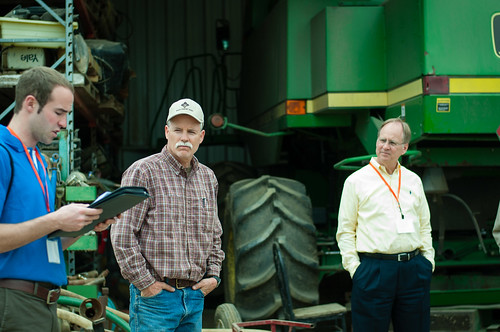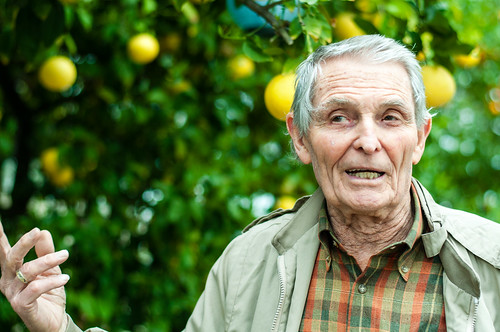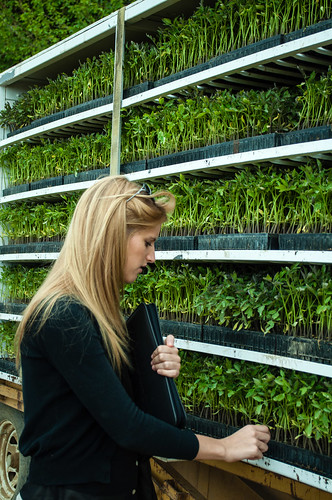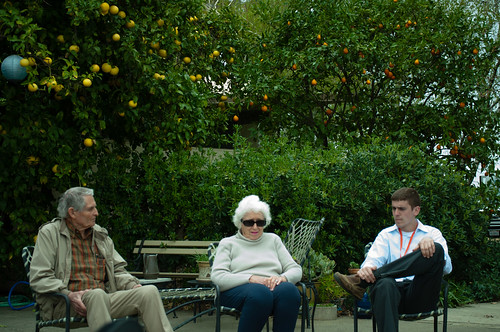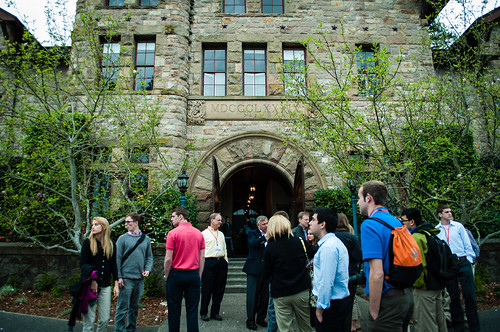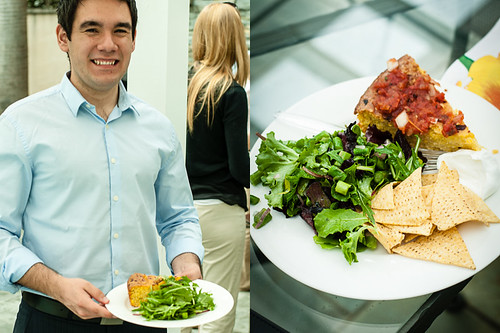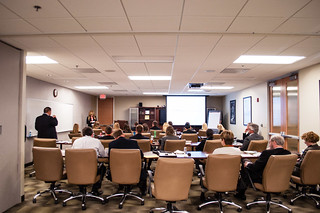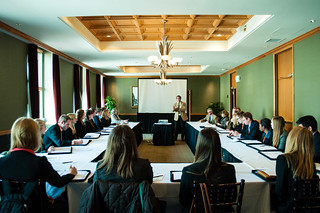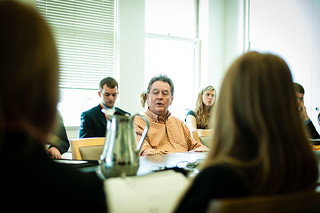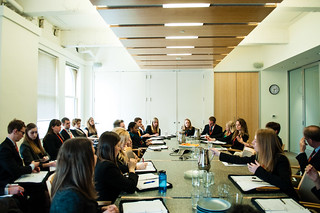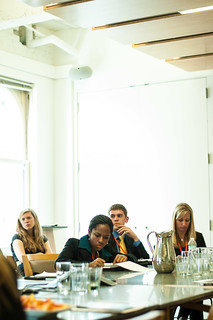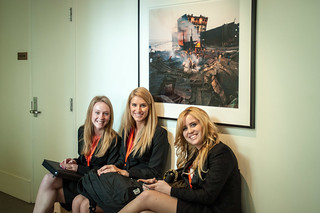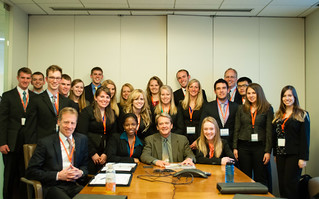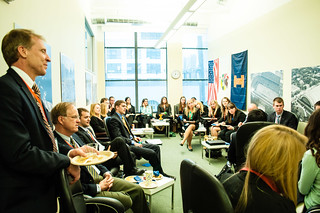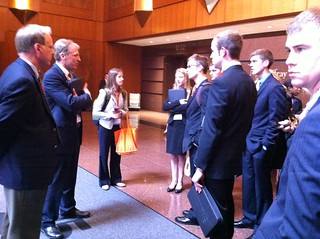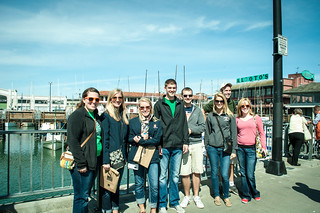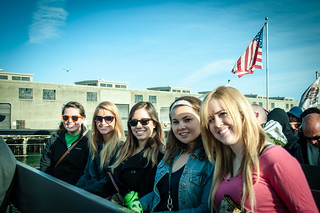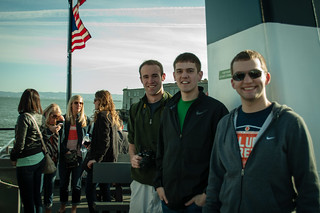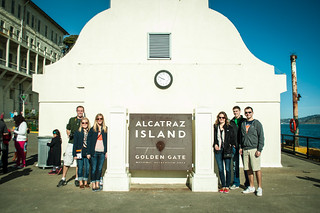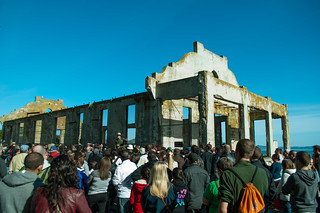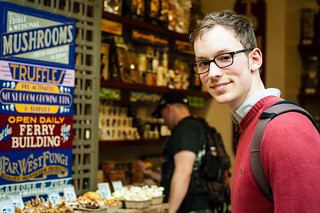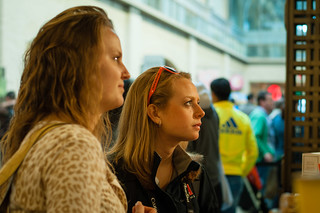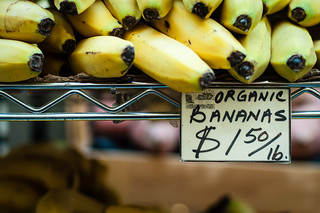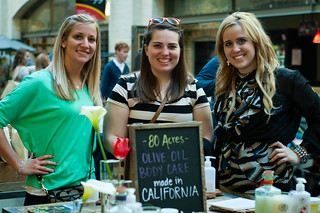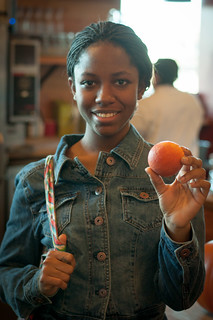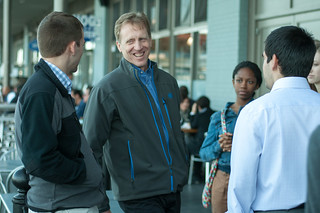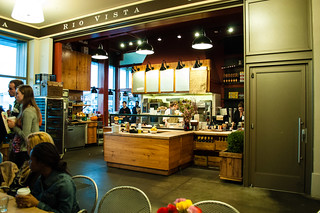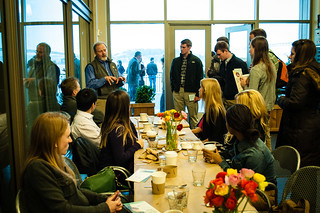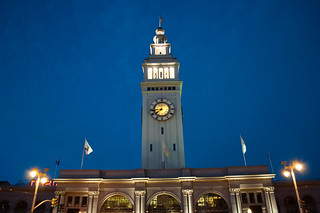By Carlee Silver, Elise Ellinger, Jacqui Hendricks, & Colby Silvert
This morning, Tuesday March 19th, our group of University of Illinois College of ACES students departed our hotel in downtown San Francisco for Sierra Orchards in Winters, CA. There we met Craig McNamara, the President / Owner of Sierra Orchards and Founder / President of the Center for Land-Based Learning. We then began to explore the orchards learning not only about walnut production, but also gaining insight on water conservation, nitrogen content in soils and organic certification. We also spoke with a fairly new farmer working under the mentorship and on the land of Mr. McNamara. We learned how new farmers can break into such an expensive start-up industry and profession out here in the most diverse agricultural region in America, and perhaps even the world. Mr. McNamara and his wife provided us with a delicious, nutritious and organic lunch of fresh lettuce and asparagus salad, chips and salsa, strawberries, edamame, and a special homemade Mexican-style cornbread pie that we all enjoyed on their beautiful patio at their farmhouse.
Our next stop for the day was Rominger Farms to visit Richard, Bruce and Evelyn Rominger. This family-owned and operated farm produces tomatoes, rice, wheat, corn, sunflowers and many more acres of key agricultural products. We were able to observe the manual labor of planting tomatoes, an uncommon large-scale production that not very many of us were familiar with. The majority of their tomatoes end up in Campbell’s soup and other canned tomato products packaged and marketed by store brands such as Walmart’s Great Value brand. The Romingers also shared their views on federal farm policy as Richard Rominger has an extensive background in farm policy serving previously as California’s Secretary of Agriculture and the USDA’s Deputy Secretary of Agriculture during the Clinton Administration. Their opinions were quite different from what we have heard many Midwestern farmers express, which was expected and welcomed in discussion throughout our travels in California. The Rominger family was very supportive of conservation programs as well as nutritional assistance and desired major cutbacks in commodity subsidizing. As a parting gift we even received fresh oranges, tangelos, and grapefruit straight from their citrus trees growing around their patio.
After a drive up a winding road through the mountains to Napa Valley, we finished our day with the Culinary Institute of America (“CIA”). Here we met Mark Linder, United States Agricultural Liaison for the CIA and co-founder of the Farm Bureau Agriculture in the Classroom Program. We received a tour of the beautiful facilities once owned by the Christian Brothers as a winery and distillery. Now renovated, it is home to approximately 300 of the finest culinary students and faculty in the world. After our tour we were hosted by a renowned on-site restaurant, The Wine Spectator Restaurant at Greystone, for a magnificent dinner – a choice of crispy chicken leg confit or garden vegetable risotto.
Today we were able to truly see California’s diverse agriculture systems first-hand. Farm acreage in this area is much smaller than needed for corn and soybeans. One beginning farmer that we met made a significant net profit off of a mere seven acres by marketing all of his produce to San Francisco area restaurants. Still, it is apparent that input costs, necessary labor, and land prices are quite a bit higher in California compared to Illinois. This farmer in particular grows all of his produce using organic methods, but because the certification is so costly, he stays away from becoming a certified organic farmer. He has no problem with restaurant demand in the bay area and continues to sell his produce year after year.
We also saw the importance of immigration in the agricultural sector, particularly here in California. Many of these specialty crops are labor intensive and currently rely on immigrant and migrant workers. Looking into the future however, this could create setbacks due to changes in workforce skill as well as immigration policy. We were numerously reminded today from a variety of distinguished speakers about the importance of agriculture and the role we will play in the future of the industry. It was enlightening to learn that we are studying such pertinent topics, relevant to survival of the human race and the future of our world.


